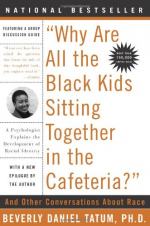
|
| Name: _________________________ | Period: ___________________ |
This quiz consists of 5 multiple choice and 5 short answer questions through Part III, Understanding Whiteness in a White Context, Chapter 7, White Identity and Affirmative Action.
Multiple Choice Questions
1. What is the first of five stages that whites pass through in dealing with race, according to the author in Part III, Understanding Whiteness in a White Context, Chapter 6, The Development of White Identity?
(a) Pseudo-independence.
(b) Contact.
(c) Disintigration.
(d) Autonomy.
2. What refers to something used for or regarded as representing something else; a material object representing something, often something immaterial?
(a) Lingual.
(b) Catalyst.
(c) Symbol.
(d) Antagonist.
3. What groups benefit from systems of racism (and other isms), according to the author?
(a) Political groups.
(b) Fringe groups.
(c) Radical groups.
(d) Dominant groups.
4. What means conforming to the standard or the common type; usual?
(a) Individualistic.
(b) Eccentric.
(c) Normal.
(d) Amoral.
5. What word means to incorporate the cultural values, mores, motives, etc., of another or of a group, as through learning, socialization, or identification?
(a) Alienation.
(b) Internalize.
(c) Affirm.
(d) Nativism.
Short Answer Questions
1. What refers to the unfair treatment of members of majority groups resulting from preferential policies intended to remedy earlier discrimination against minorities?
2. In Part II, Understanding Blackness in a White Context, Chapter 5, Racial Identity in Adulthood, Tatum reports that she did not sit at the Black table in her cafeteria for what reason?
3. Tatum conceives of herself as both perceiving and _______ race.
4. What is the second stage of William E. Cross, Jr.'s theory of Nigrescence?
5. Beverly Daniel Tatum is currently the president of what educational institution?
|
This section contains 263 words (approx. 1 page at 300 words per page) |

|




